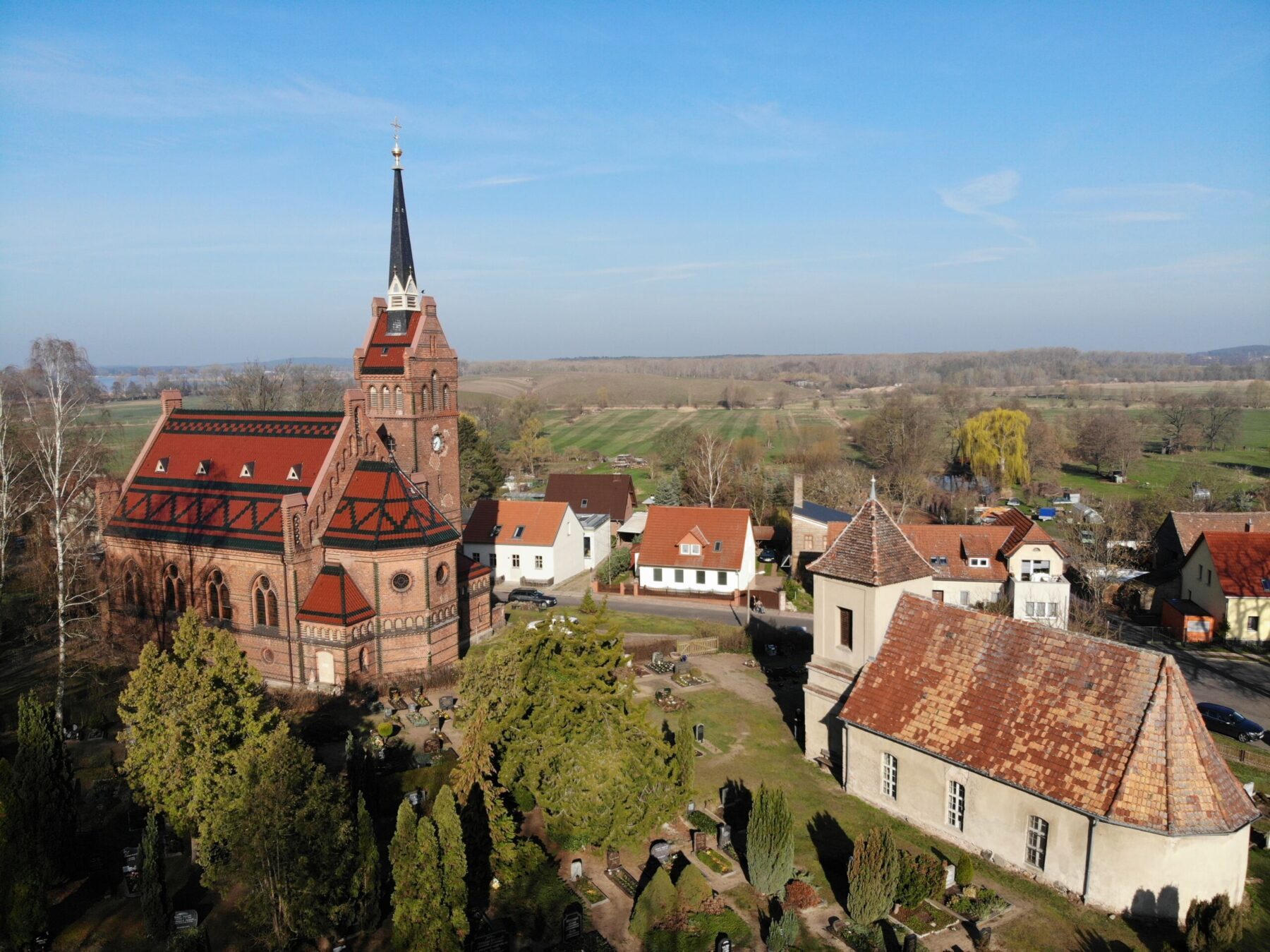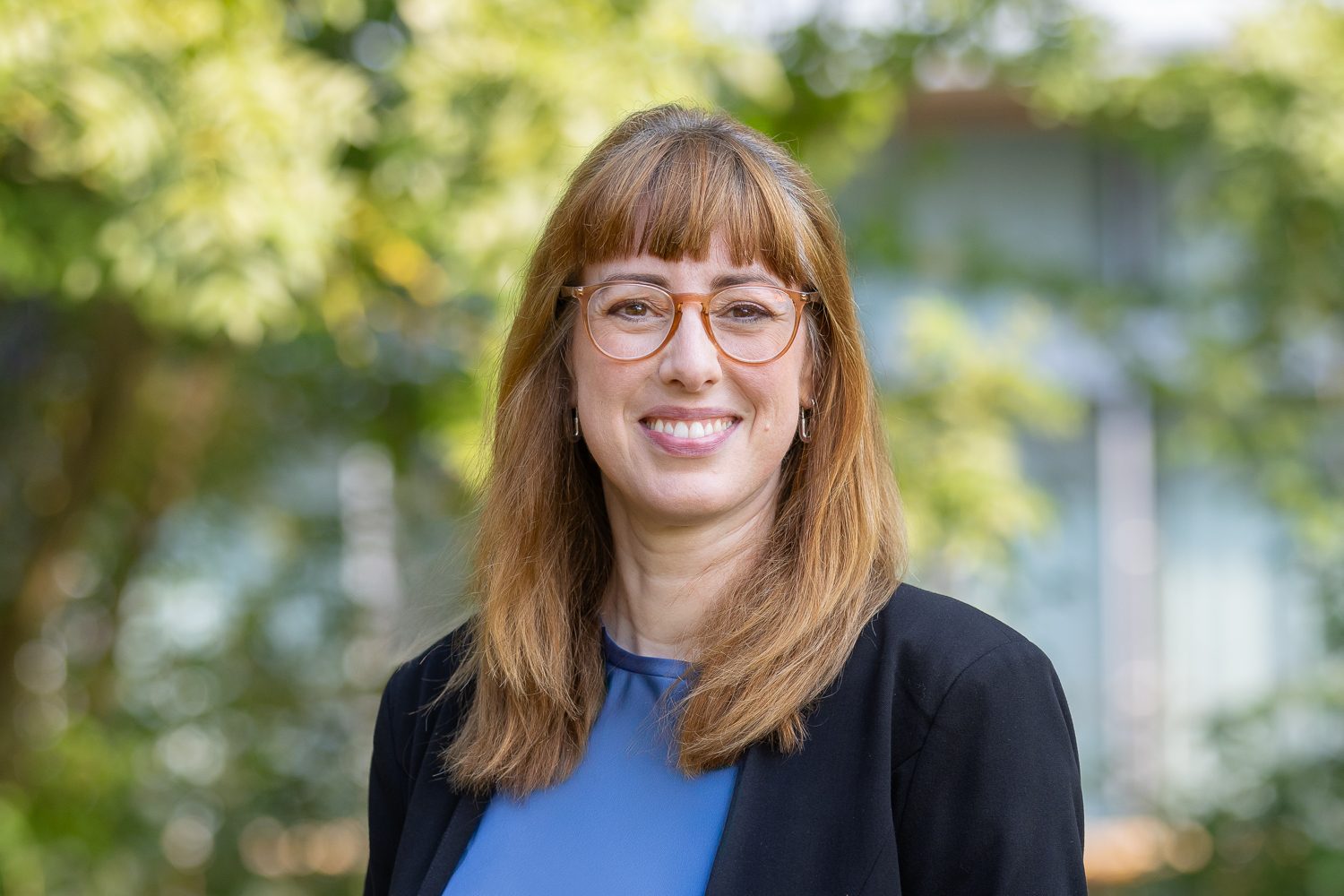
Historical Gem with a Vision of the Future in Potsdam-Golm
If you set off by bike from the Potsdam Science Park to “Alt-Golm”, you can easily do without the online map service in your mobile phone. It is 1000 meters to the churches in Golm – here two different worlds lie right next to each other. The functional modern research buildings and construction cranes in the Science Park on one side, next to the old village centre, for the preservation and substance of which the inhabitants of the Golm district are committed with extraordinary civic commitment.
I get on my bike and three minutes later I’m standing in the red-brick entrance of the Kaiser Friedrich Church. Surrounded by old trees, it stands on a hill and looks like the big sister of the old village church of Golm, which crouches rather inconspicuously against the old cemetery hill next to it. In front of the two-tone decorative arch to the chancel stands civil engineer Johannes Gräbner, the chairman of the Golm Church Building Association. He has a lot to say about both churches. Today he coordinates some restoration work. The association and the community have a great interest in the preservation of the historic building fabric for posterity. He himself has a special interest in spaces of respectful interaction, says Gräbner, where people do not misuse their tone as quickly as they do in everyday life. Behind him, work is currently underway on the three-part mural. The “Wedding of Cana” from the master class of the Berlin history painter Professor O. Knille shines softly in pastel shades. Through the three round windows, sunlight falls on the altar.
Crown Prince Friedrich Wilhelm, later Emperor Frederick III, and his wife Victoria commissioned the construction of the newer church right next to the Old Village Church 136 years ago on the occasion of their silver wedding anniversary. The foundation stone was laid on 9 September 1883 and the inauguration took place three years later in the summer of 1886. The dates on the walls of the stately imperial box and the coat of arms of the Hohenzollerns on the ceiling still bear witness to the historical date. From here, the crown prince and princess looked out over the community through a small window. The people were provided with a view of the altar and the paintings. At that time, there was room for 350 people in the nave, although the congregation was much smaller.
The wrought-iron chandelier with brass trims hangs surprisingly low in the nave, which is due to the fact that it is currently being worked on. With financial support from Kaiser Wilhelm II, the community was able to purchase the chandelier 131 years ago in 1888. Today, the members of the church building association and Golm citizens polish the brass in elaborate manual work, guided by experts. All the individual parts have just been reassembled, meticulously documented and with the joint will of the volunteers to preserve this place. Among the former 40 candles, some LEDs are now also lit. The carefully installed lighting in the nave highlights the brick vault and gallery, highlighting the exhibition of local artists.
The smaller church next door is much older
The Old Village Church of Golm next door is one of the oldest buildings in the region. The dating of local finds proves a first settlement in the 8th and 9th centuries, the village of Golm was first mentioned in a document in 1289. The choice of location is due to its location on the hill, protected from the flooding of the Havel River behind it. Initially, there was probably a wooden church here. The first walls of today’s Old Church in Golm were built by Margarethe von der Groeben in 1449 on the occasion of the funeral of her husband Claus von Schönow. Later generations of the community initiated two further construction phases. The walls of the nave were built around 1680, followed by the third construction phase in 1780 with the extension of the church tower.
The building is a listed building and is in urgent need of renovation. This is particularly evident in the alarmingly sloping side walls, from which the plaster is crumbling in large pieces. Some parts, such as the wooden ceiling above the altar, have already been renewed, but there is a lot to do. Among other things, the coffered painting of the ceiling is to be rediscovered and the original side entrance to the nave is to be reopened.
The Golm Church Building Association, founded in 2002 by nine citizens of the district, is dedicated to the preservation of the two churches for posterity, generating small income through guided tours, exhibitions and concerts. As with other historical sites, however, it is important to find supporters to finance the maintenance in accordance with monument regulations. Donations are welcome and would then also directly benefit the project. In the foreseeable future, a large event room is to be built in the Old Village Church of Golm for citizens who want to create something new together within the old walls. The church building association and the local parish church council have developed the vision of transferring the building to the joint sponsorship of the users. Organisers of cultural and educational programmes, seminars or chamber concerts will then bear shared responsibility for this gem.
The two churches in Golm are open to visitors on Sunday afternoons from Pentecost to the beginning of September, and the church building association offers coffee and cake for day-trippers and citizens. If you are looking for a place to visit Potsdam on Sundays, take your bike with you to Potsdam’s city center and cycle from Luisenplatz through Sanssouci Park, around the New Palace and along Lindenallee. From Kuhforter Damm, the “Am Urnenfeld” cycle path then leads to Reiherbergstraße and the two churches on the hill in Geiselbergstraße. It is also easy to get there by bus: From Potsdam Central Station, line 606 runs directly to the Alt-Golm stop in Geiselbergstraße.
Foto: J. Gräbner, Kirchbauverein Golm e. V.
download PNN special supplement to the Potsdam Science Park from 21.09.2019 here

Karen Esser
PR & Communications
karen.esser@potsdam-sciencepark.de + 49 331 237 351 103